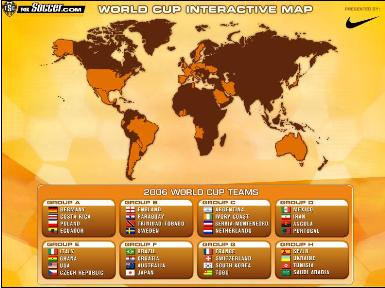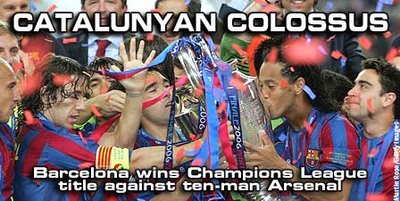Most people just assume that a new computer is a Dell or Gateway. Few people (other than the technically inclined) know that Dell and Gateway skimp on the parts inside the computer. What you're left with is a third-rate computer that costs much more than it should have. Computers are surprisingly easy to build. Branded computers can offer both value and performance, the parts used can be powerful and cheap, and you can switch on and start work. Yet parts are often short-spec in one place or another. Sadly you'll often get a performance "bottleneck": such as a slow graphics card, only a basic amount of memory, or a slimline motherboard with too few upgrade slots.
If you can afford the time to plan and build your own machine, you can design a system more targeted at your own use:
- A case-size and colour that stylishly fits your environment. Choose your own keyboard mouse combination, maybe get a rechargeable mouse that doesn't need constant battery changing.
- Parts that will enhance your specialisms. Different configurations suit (from cheap to expensive):
- Work and Productivity: Office and Email. A cheap branded PC will do nicely.
- A Gamer (games playing) Rig. You'll need a killer graphics card.
- Music Producer. Specialist sound cards offer lots of features and mult-channels.
- Video Editing Suite. Your processor, hard drive, and memory (some situations graphics card too) are used extensively.
- Multi-Client Server. You need a really powerful rig that can shift large amounts of data 24/7.
The cost implications of choosing between these uses are huge. A cheap Work computer might cost only two or three hundred. A Server can reach tens of thousands. Choose your setup, and take the advice of experienced users in your field.
You'll only spend the amount of effort and money that gives you a PC that suits your purpose.
We'll assume that you've chosen what your primary use will be. Now we'll build the computer and get it working. Please see the Warnings for cautionary preparations.
Steps
- Select your hardware:
- Motherboard - This is the base that the other components hook into. Modern boards contain PCI-E(xpress) slots that are much faster than the old PCI. Motherboard makers list compatible cpu and memory products online. You should read them before making your cpu and memory selections. Go to Crucial.com's online memory checker to make sure you select the right memory for your motherboard. You need 8 USB slots (or at least 6) for all your add-on digital cameras, printers, scanners, webcams etc. DFI's LanParty line of performance mobos provide great customizing potential at a great price. Intel makes great mobos if you're looking for a more stable approach.
- Graphics - Unless your motherboard had built-in graphics (ok for office work), and you don't plan to do anything graphically intensive (gaming, video editing, etc) you should buy a graphics card. Your graphics card fits into either a PCI-E slot (the current graphics standard), or an AGP slot (a dying interface, but still alive). If you are upgrading an older, manufactorer-built PC, there may be neither of these slots, in which case you will have to use an empty PCI slot to accompany a PCI video card. These mobos almost always have integrated video. Two main chipset makers exist: ATI and NVIDIA. Despite what people say, neither is overall better than the other. Each one makes a card that will fit your needs. If you're an extremely hardcore gamer and you really want to know which one makes the best card, you probably already know how to build a computer anyway.
- Processor (CPU) - Intel or AMD. The facts are that AMD show better results in gaming and desktop computing, INTEL have better straightline speeds for data-crunching, AMD Athlons and Opterons are better now, until INTEL can bring its new ranges out. Go for the Athlon 64 model and a socket 939 motherboard as it's not ridiculously expensive and has great value. This is the way to go if you want more upgrade options, or a gaming computer. If you are an Intel fan since they are sometimes said to have more stable timing, go with a Pentium 4 and a socket LGA775 board.
- Power Supply - Focal to the computer is the power supply itself. Power Supplies are mainly rated by their power output in watts. A 350W is bare minimum anymore, suitable only for an office machine, while big gaming rigs sometimes need PSUs in excess of 600W.
- RAM for your motherboard's memory slots (2,3 or 4 will fill it up). Fast memory is more expensive, sometimes more is better than faster (application dependent). RAM choice is dependent on the motherboard. Go with a stick of 512 MB DDR RAM as the minimum.
- Hard Drive - getting cheaper and cheaper (much less than $1 per GB). SATA, the current interface, offers RAID support and faster transfer speeds. All new motherboards are compatible with SATA hard drives. A 7200 RPM drive is crucial (anything less will bottleneck your entire system.)
- Additional Drives - In addition to the Hard Drive, you will also want to purchase a Floppy Drive and a CD/DVD Drive. The Floppy Drive is fairly standard and will be inserted into your case by opening a side panel and putting it in a vacant bay. After doing so, use a connector from the power supply and a data cable from the motherboard. The CD/DVD drive is similar, but with greater storage capacity per disk and variety of drives (CD, CD-R, CD-RW, DVD, DVD-R, DVD-RW, etc.)
- Connect your hardware according to the instructions that come with the motherboard.
- See Tips and Warnings for safety and continguency advice. Don't leave the hardware on your floor for days while you figure out what you should do.
- Now that the inside is done, now we can do the outside:
- Case - A mid-size, mini, or micro cube is fine for most users, but a full tower may be needed for servers or users who want a lot of space. Just make sure the tiny box you'd like has enough space for hard drives, DVD recorders and that optional card reader. Running out of space is a pain.
- Monitor - CRTs, the large, box monitors, are still preferred by graphic artists for their reliability and color accuracy. However, LCDs are much sharper and will leave your desk less crowded. They also consume less power. It's mainly a money decision.
- Keyboard & Mouse - There are expensive gaming and work sets available, for first-person-shooter (FPS) games or designing 3D. Just get a cheap set (wireless is good, less congested) for basic computing. A docking rechargeable mouse is great (no more battery changing!). If you love FPS games, then you should go with a optical mouse that has a nice feel and weight to it. If you have carpal tunnel syndrome then a trackball mouse might be best. They are slightly more expensive, but you don't have to move your wrist at all and you can place them anywhere (leg, table, arm of chair, anything).
Tips
- Spend no more than is required for your usage. Ignore salesmen or others who implore you to waste money on unneeded upgrades.
- Frankly it's better to ask nicely and get an experienced geek to source the parts and build the machine. Individual hardware can have niggling incompatibilities that can ruin your user experience. Insist on years of exerience. You'll be glad you did.
- If you make the machine yourself, do as much research as possible. Choose parts that are likely to work well together. Read about configurations that have worked well for other users.
- The more preparation, research and careful selection of parts you do (and making it), the less proportion of your life you will spend making the darn thing work.
- Well, that's all you need in order to build computers, but you still have the need of an operating system (Windows, Mac, Linux). Most people have Windows and know it well, but Mac users are very happy with their incredible ease of use, and lack of problems (no viruses on mac!). Linux is great, but a steep learning curve.
Warnings
- Be careful of ESD (Electrostatic Discharge) when putting it together. Wear a static wristband (available from stores), or at least regularly ground yourself.
- Double or triple check all connections before switching on the computer for the first time.
- Avoid spilling coffee/tea. Computers hate liquids.


